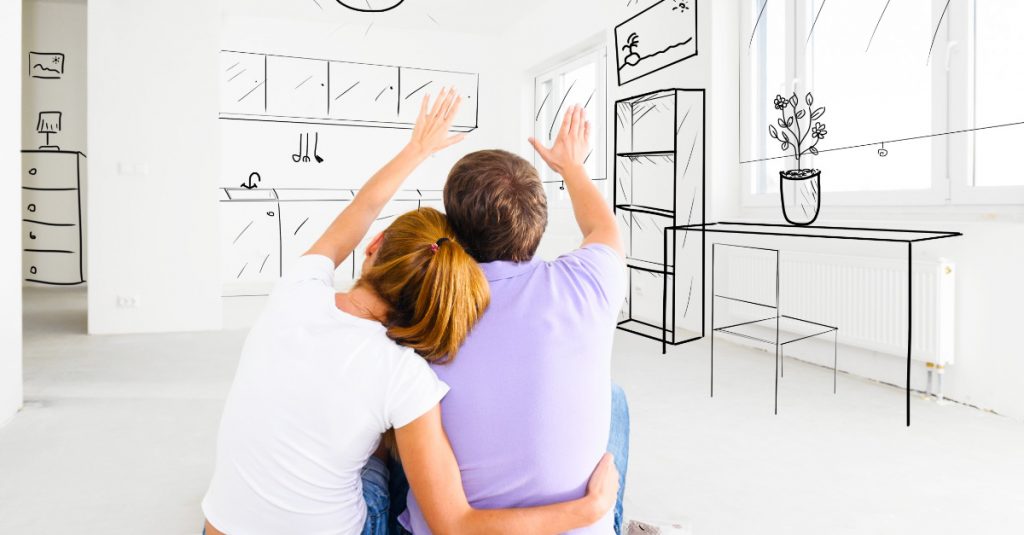It’s time to start the discussion around 2022’s anticipated new home designs. With just a couple of months left in the year, 2022 is knocking on the door. Will the epidemic continue to influence trends? Let’s take a peek at what’s on the horizon.
The direction of house design is influenced by a number of variables. We know we have the winning ideas when several sources agree on their predictions. In the end, it’s about how people want to live, not about what’s popular.
The ideas on the following trend list are ones that we believe will add value, style, and comfort to your house. Adding value is something the leading homebuilders are adopting so that their house listings stand out in a crowd.
Here are nine of the most popular trends in home design that builders are continuing to integrate.
#1 Automation & Smart Homes
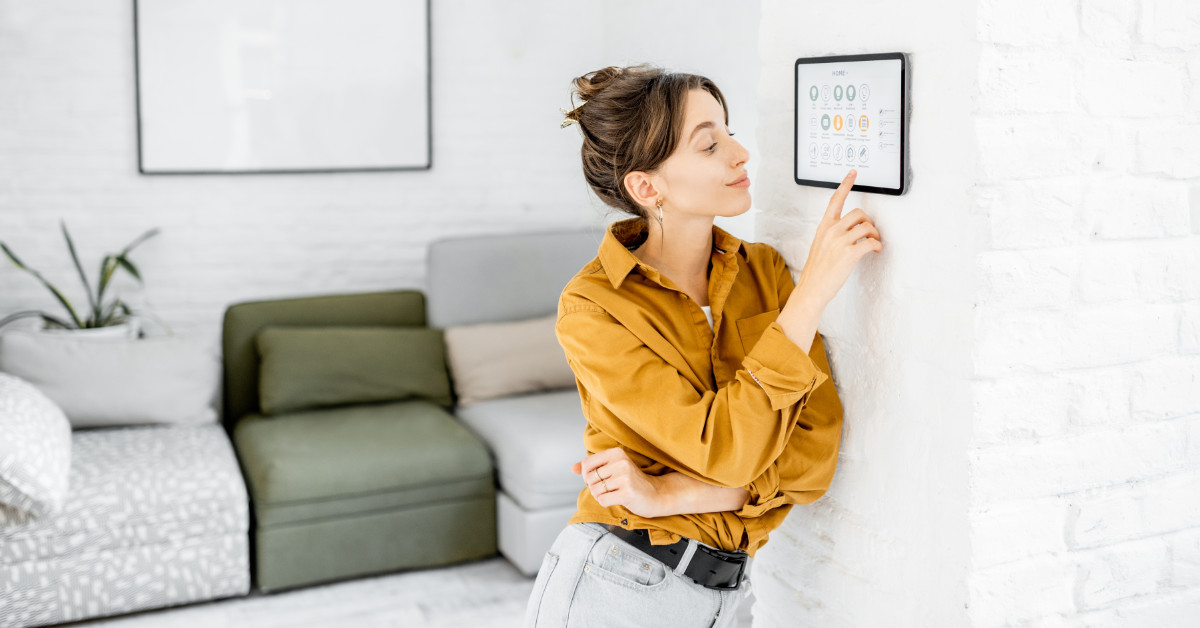
You can program certain routines with Amazon Alexa and Google Assistant to teach your gadgets to operate together and perform several things at once, such as changing the thermostat and lighting when you arrive home.
You can control your gadgets using Siri voice commands or an Apple Watch and you can build scenes to activate several devices at once with Apple HomeKit.
You can connect different internet-connected gadgets and simply program them to react to real-world events, such as configuring your lights to come on automatically at sunset, using IFTTT, Zapier, and other automation connectors that are supported by many of the major smart home appliance and gadget companies.
Listening Devices & Speakers
Anything that allows you to maintain control of your smart home from the comfort of your own home is beneficial. Allowing you to give some voice commands even if the internet is down, as well as faster response times, are both fantastic.
While the Nest Mini lacks the audio output connection that enables you to connect Echo Dots to higher-quality speakers, it remains one of homeowner’s favorite gadgets, especially for those who use Google services like Gmail and Calendar on a daily basis.
Smart Displays & Assistants
The Echo Show may have been the first smart display, but Google improved the idea with the Nest Hub (previously the Home Hub), both in terms of appearance and how it uses its voice assistant. The second-generation model comes with a cheaper price and additional functionality.
The Nest Hub has the same Google Assistant capabilities as the Google Home speaker series, as well as a screen interface that provides just the appropriate amount of visual feedback. It can expertly guide you through a recipe from famous culinary websites, and it integrates smoothly with Google-supported smart home cameras and video doorbells to display their camera feeds on-screen. Sleep Sensing and Quick Gestures, such as stopping media with an air tap in front of the display, are also supported by Google’s Soli.
Wi-Fi Mesh Routers
Wi-Fi is crucial, especially as you start distributing smart speakers, smart lighting, smart plugs, and other smart devices from room to room. After all, those interconnected gadgets won’t help you much if they can’t, well, connect.
That’s why a mesh router, which is designed to provide a strong, fast signal across your home, may be a particularly sensible investment — especially if you live in a large house. We believe the Nest Wifi is the best option out of the ones we’ve examined. The two-piece starting package is able to provide enough signal strength across the 5,800-square-foot CNET Smart Home. Furthermore, the range extender serves as a smart speaker, so you’ll be expanding Google Assistant’s footprint in your house as you spread a solid connection from room to room.
Smart Power Switches (Receptacles)
In-wall smart plugs are internet-connected wall outlets that replace your normal wall outlets, providing you a cleaner, more seamless finish than cluttering your ordinary outlets with bulky smart plugs. Naturally, installing them takes more time and money than purchasing a plug, and when/if technology advances, replacing and upgrading will be more difficult.
Smart Light Sockets
Smart light switches and dimmers integrated in your walls are the most beautiful smart lighting option. Sure, you could put smart bulbs into your fixtures or connect a couple of lamps into smart plugs and call it a day, but if the light fixture is controlled by a dumb switch, you won’t be able to control the smart bulb if the switch is turned off.
A smart dimmer can change the brightness of the lights in the fixtures it controls, while a smart switch can only turn a connected light bulb or fixture on and off.
Smart Thermostat
A smart thermostat, also known as a linked or communicative thermostat, enables you to customize temperature settings based on daily routines, weather conditions, and heating and cooling requirements. This sophisticated capability is available on certain Wi-Fi thermostats, but not all.
The capacity of a smart thermostat to learn a household’s habits and regulate heating and cooling based on when a home is inhabited or about to be occupied is its main benefit. When no one is home for long periods of time, this lowers the usage of heating and cooling equipment.
Home Security Cameras & Video Doorbells
Installing video surveillance equipment in your house as a security precaution was formerly seen to be a dramatic and costly undertaking. With today’s technology’s accessibility and cost, not having any kind of video surveillance installed seems like a strange choice to make as a homeowner. Technology advances have resulted in substantial improvements in video camera quality, recording capacity, and, most crucially, affordability (along with significant cost reductions).
Surveillance cameras in and around the house enable homeowners to monitor their property at any time and from almost anywhere. Installing these security cameras in your home is a wise decision for a variety of reasons, including deterring thieves, aiding police, checking on family’s welfare (and pets), and insurance benefits
Smart Locks
Smart locks are an excellent method to guarantee that your house is secure no matter where you are.
Smart locks eliminate one of the most inconvenient aspects of home ownership. They not only provide great security, but they also remove the need to rummage around for your keys. You won’t need a physical key to locate or lend to pals to keep an eye on your home while you’re gone.
With certain levels of access, you’ll always know who’s entering your house, and you’ll get a notification on your phone or through email anytime the doors are opened or closed.
This is a great method to keep track of when your kids get home from school or if someone tries to break in while you’re away. If you’re at home, your smart locks may also notify you when visitors arrive for a party or dinner that you’re hosting.
#2 Multipurpose Spaces

It’s not unusual these days for us to have to prepare ahead in order to utilize a space for several purposes. More square footage is expensive, so there are many reasons to consider multi-purpose rooms these days.
Whether it’s a home office, a craft area, a home gym, a nursery, a playground, or something else entirely, builders are considering what exactly is required to create these multipurpose spaces.
Homebuyers are looking for houses with flex areas for convenience and flexibility. According to a Meyers research survey, 68 percent of homebuyers desire to customize their space.
Homebuilders are embracing the buyer’s desire for flexibility and to modify the space in their house to suit their requirements, whether they are homeschooling their children or working remotely. Homebuyers now have a better understanding of their requirements than ever before thanks to the impact COVID-19 has had on so many.
As the demand for working and teaching at home has grown, a workstation or home office has become a new must-have. In fact, one home office may not be sufficient for today’s homeowners, who want more privacy and personal space for the whole family.
Traditional rooms no longer serve the same function or are as valuable as they once were. Rather of having a traditional dining room or living room, builders may repurpose the space by converting it into an office or workstation for their customers. Or leave the door open for buyers to do their own conversions.
#3 Curvatures
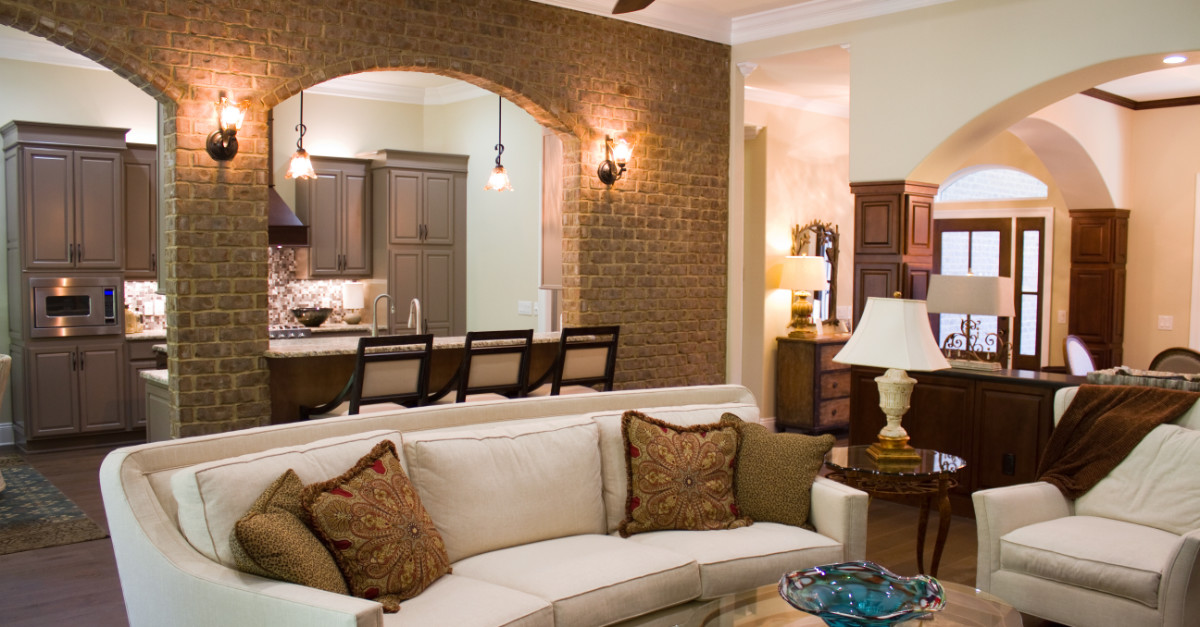
Arched entrances, whether gothic, foiled, or rounded, always make a statement. Although it may not seem to be a significant alteration, arched openings have a significant effect on the look and feel of a house. But don’t simply choose “arched apertures” and call it a day. Consider curved walls and their benefits.
A curve-designed interior offers several benefits over a conventional rectangular architecture. In addition to being beautiful and distinctive.
Finally, curved walls can help with sound reduction by bouncing soundwaves back into the room as opposed to allowing them to escape. If you’re looking for a quiet place to read, do homework, or finalize a project for your work, a curved room can help you stay focused.
#4 Naturally Inspired
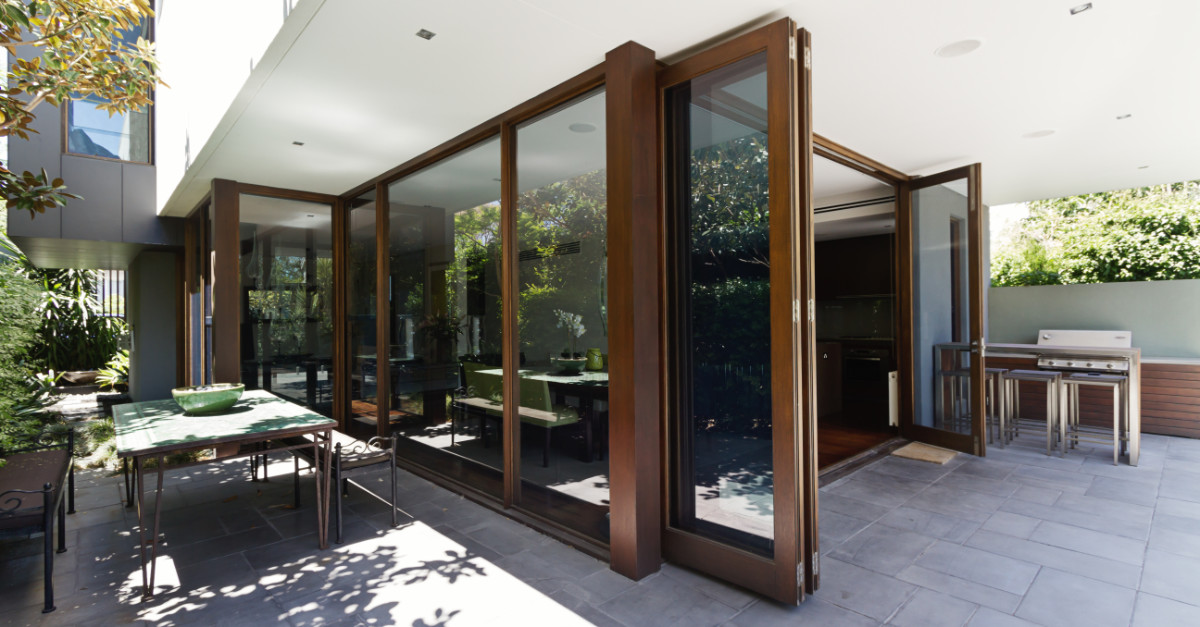
Water, vegetation, and natural light, as well as materials like wood and stone, are all being used more and more in home design to integrate aspects from the natural world into constructed environments. Many believe that the use of nature in design allows for more exposure to the environment and can improve health and well-being. It might even help lower heart rate variability and pulse rates, reduce blood pressure, and enhance activity in our neurological systems.
Our ties to the natural world have shifted throughout time in tandem with technological advancements. The 19th and 20th centuries saw significant changes in how humans engage with nature. We spent more and more time inside, protected from the weather. People nowadays spend about 90 percent of their time inside, commuting between their homes and jobs.
Interior designers that embrace biophilia create environments that are more stress-relieving while also enhancing cognitive function and creativity. They may utilize botanical shapes and forms, as well as establish unique aesthetic connections to nature, in interiors using biophilic methods. As a result, we recognize that biophilia is made up of many natural layers that resemble interior design.
#5 Back to the Basic Colors
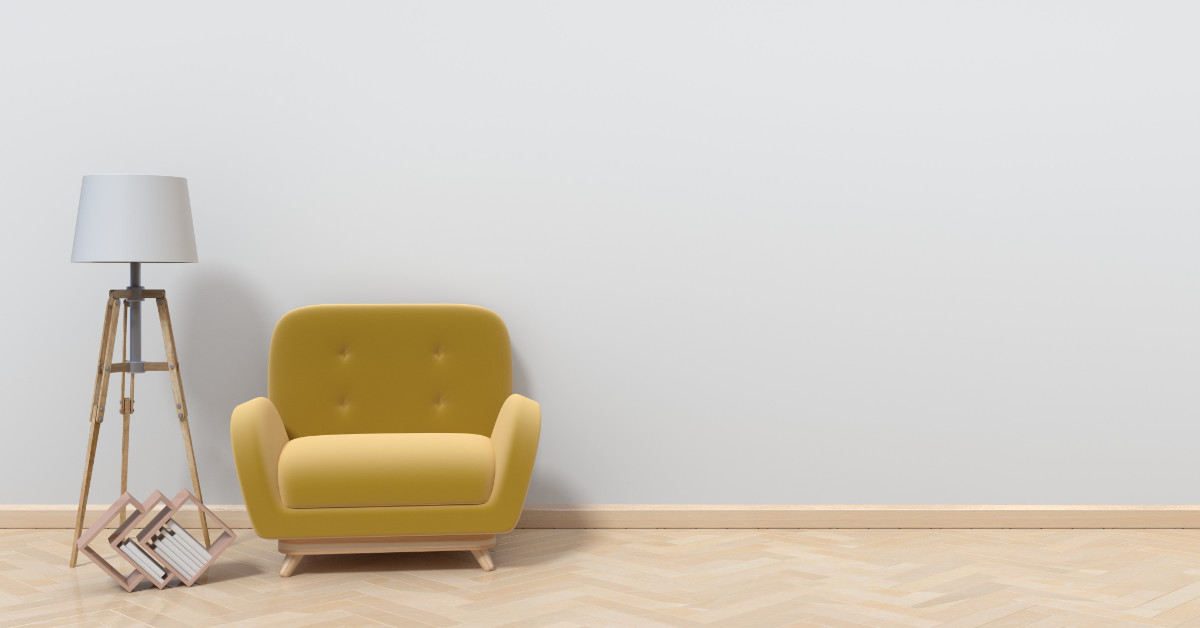
Color is frequently the most challenging aspect of a space to get right for interior designers. This is due to the fact that colors are unpredictable. There are a plethora of colors to select from and they must be combined in the proper proportions. They won’t be able to work together in harmony otherwise.
Fortunately, there are a few color guidelines you can follow to ensure that your colors are always balanced and homebuilders have taken notice.
Any embracing interior design should be considering the 60-30-10 rule. This guideline may be used by builders to ensure that the color pallet remains balanced no matter what the buyer’s style is. The percentages of the design that each will make up are 60, 30 and 10. The following is how it works.
To begin, the designer selects one dominating color that will take up around 60 percent of the space. This is usually a neutral or a muted color that can take up a lot of space without seeming claustrophobic.
The secondary color, which is usually a little stronger and takes up approximately 30 percent of the area, will come next.
Finally, the remaining 10 percent should be made up of your accent color, which should be the strongest hue.
#6 Minimalism
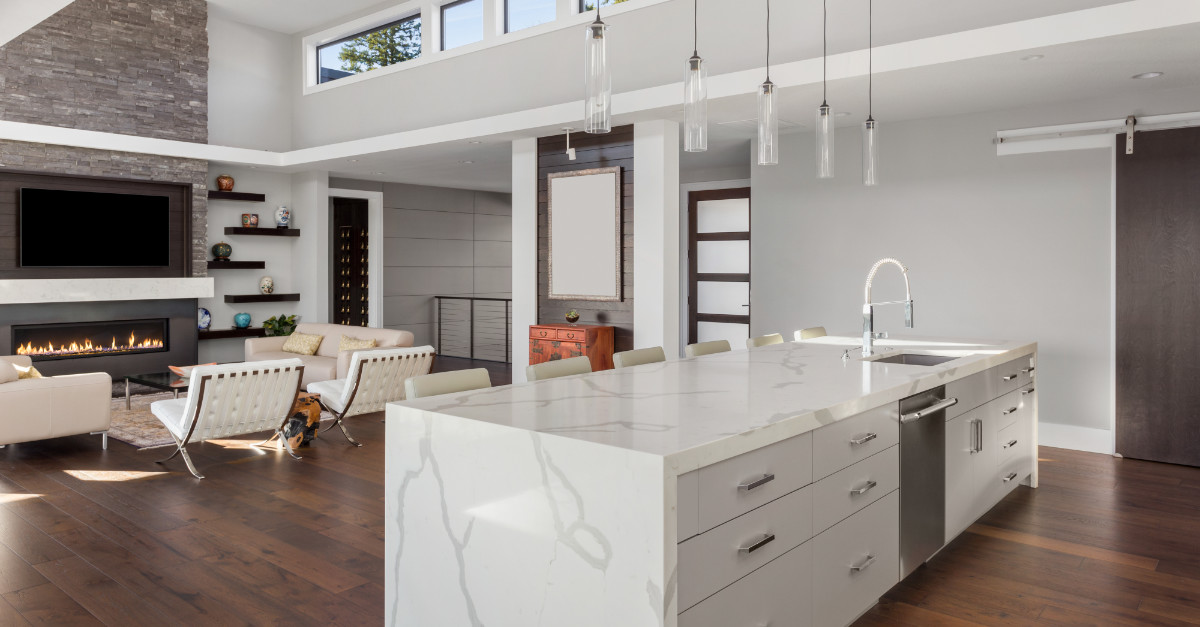
Clean lines, reductive, uncluttered, monochromatic, simplicity, and the phrase “less is more” are just a few of the words and concepts that spring to mind when thinking about minimalism.
Guess who embraces minimalism more than any other group? If you said millennials, you’d be right.
Minimalism is a way of life centered on having less material things and purchasing less. It stands in stark contrast to consumerism, which claims that spending and purchasing more would lead to greater satisfaction and happiness.
Recently, an increasing number of individuals have discovered the pleasures of minimalism, which may come as a surprise to those who believe millennials are entitled brats who can’t say no, since a minimalist lifestyle requires a great deal of self-control and discipline, particularly in the beginning.
When confronted with a resolved minimalist interior, it’s impossible to deny the serenity and simple beauty, but achieving this look is more deliberate and frankly, difficult than simply choosing a few pieces of furniture for a white backdrop, which can leave a space feeling cold, sparse, and unlived-in.
Minimalism makes it possible for anything other than the space to be the focal point. The people in the room, for example, or the view from the window, may be more significant than the room’s decor.
Builders are embracing the idea that everything should be useful and contribute to the space’s worth. For a room to operate, all of the things in it must be present, but with minimalist design, ‘shape’ is paramount.
A table and chairs, for example, are required in a dining room. These components must communicate with one another and relate to one another in terms of line, color, mass, and so on. In their most basic form, they must function well together.
#7 Home Garden

Everyone agrees that 2020 will be remembered as a one-of-a-kind year. Travel has been restricted or eliminated, school or job may have been relocated to the house, and holidays have been observed in a variety of ways since spring. The backyard garden and house landscaping may have been one of the biggest stress relievers in all of this.
A new “Gardening Insights” marketing poll confirms that in 2020, a lot more households got into gardening. And it seems that this tendency will continue well into the future.
Gardeners spent 42 percent more time gardening in 2020, according to the poll, with just nine percent saying they would spend less time gardening. Part of the reason for this increased interest in gardening is related to more time spent at home. With more individuals working from home and no longer having to travel, they may have more time to spend in the yard or garden.
More good news, according to the survey, is that 86 percent of respondents intend to garden the same amount or more in 2021, with almost 10 percent contemplating it. With 94 percent of both age groups 19 to 28 and 29 to 39 intending to return in 2021, they are among the biggest groupings.
It just so happens that these age groups also make up the largest share of home buyers. So it’s a no-brainer that homebuilders looking to get an edge up on the competition would be embracing home gardening in their property designs.
#8 Eye-Catching Floors
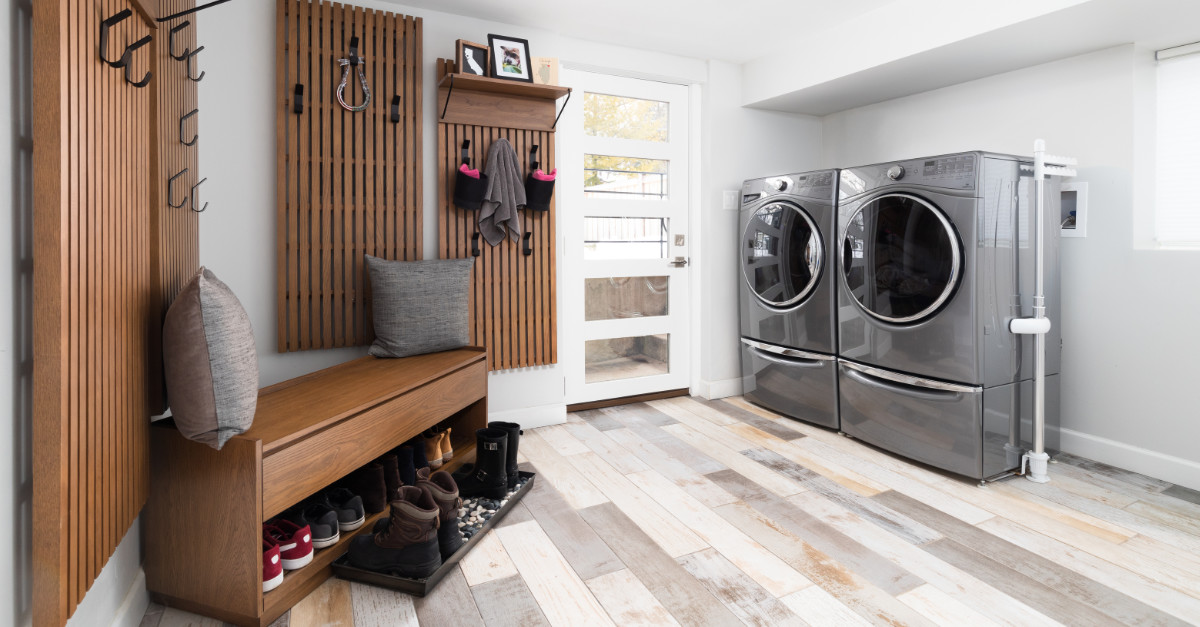
According to the 2019 Remodeling Impact Report from the National Association of Realtors (NAR), who installed “new wood flooring” expressed a higher desire to stay in their house once the renovation was completed.
Not only does technology and the quality of flooring materials increase with time, but so do their designs. Below are four flooring trends that builders should be considering.
1. Worn Wood Look
Signs of wear, such as scuffs, dents, and scratches, are a common characteristic in solid hardwood floors, much like ragged holes in faded denim. Not every homeowner, however, is ready or able to spend the money on genuine wood. With so many companies creating convincing fake wood alternatives, the cost may become even more difficult to justify.
An embossed-in-register (EIR) coating on laminate, vinyl, or ceramic flooring is one method to get the appearance and feel of worn down wood. EIR finishes imitate the characteristics of real wood planks, allowing you to see and feel the grain, indentations, and other details.
2. Durability & Longevity
Hardwood continues to be a popular flooring option among today’s consumers. Indeed, real estate professionals believe that houses with hardwood floors may sell for up to 10 percent more than those without hardwood floors. With families spending more time at home, 2022 will be a watershed moment, with more homeowners valuing durability above originality.
Luxury vinyl plank (LVP) flooring is a great option for builders to achieve the appearance of genuine wood without the upkeep.
LVP is available in a broad range of colors and designs, as well as being very durable and water-resistant, making it a great option for customers who want a consistent wood appearance throughout their house.
Ceramic tile takes the term “durability” to a whole new level. This material is not only waterproof, but also very long-lasting, up to three to four times as long as hardwood.
As if that wasn’t enough, homeowners can now have the appearance of genuine wood with fake wood tiles, which include realistic characteristics like grain texture and knots, but without the drawbacks of splintering, sanding, and more.
Faux wood tiles are a great option for high-traffic areas like entryways, as well as places prone to spills and wetness, such as bathrooms, kitchens, and laundry rooms.
3. Natural Tones
Rich mahogany and red chestnut flooring are no longer highly desired looks. Today’s homebuyer wants light and airy spaces, allowing for more natural and neutral wood tones.
While dark finishes like ebony and espresso have a place in 2022 trends, brighter colors have the effect of making rooms seem bigger, which goes well with today’s open floor plans. As a result, more natural tones, such as blonde wood treatments, are in demand.
Blonde tones offer a more natural, genuine look thanks to a lighter finish, which adds to its popularity among 2022 homeowners. Blondes also have a timeless appeal that complements a wide range of house designs, from modern to rustic.
4. Prints & Patterns
While the prevailing design trends for 2022 will maintain a consistent appearance throughout the house with a single flooring material, homebuilders will likely want to show their creativity with accent flooring in smaller areas.
Mud rooms and laundry rooms benefit from decorative tiling since it provides character and intrigue.
Artisan tile work is one of the top five bathroom improvements anticipated to connect most with 2022 buyers. Look for homebuilders to offer big black and white designs to old-school, encaustic patterns and even tiny penny round tiles.
#9 Noise Reduction

Noise pollution is a frequent issue in and around the built environment, but there are a number of sound-dampening techniques that may be employed in new homes.
Insulation absorbs noise, as does plasterboard, which dampens the vibrating energy of sound. Decoupling and other soundproofing techniques should preferably be used during construction.
Decoupling is the process of separating floors, ceilings, and walls to make sound travel more difficult. Sound isolation is a significant issue with wood-framed structures, which are becoming more common. However, soundproofing may be achieved in the construction process by installing a newly designed decoupling connector raft between walls and joists.
The silicone core of the connection traps noise vibrations as they travel across various levels and rooms. Because of its efficacy, builders can use thinner stud walls while still meeting acoustic privacy requirements.

